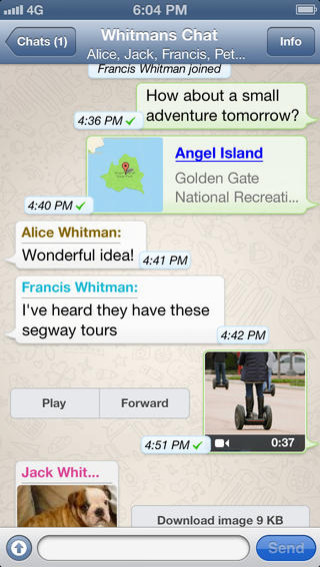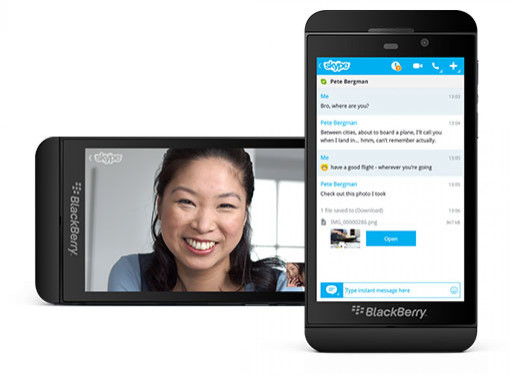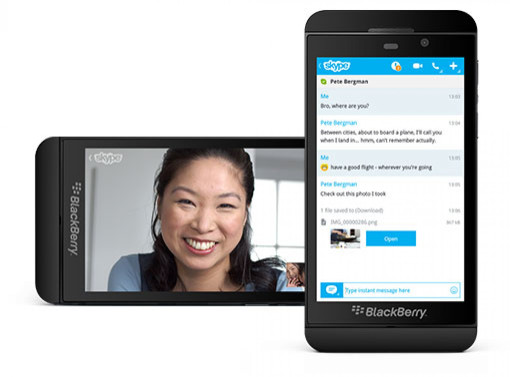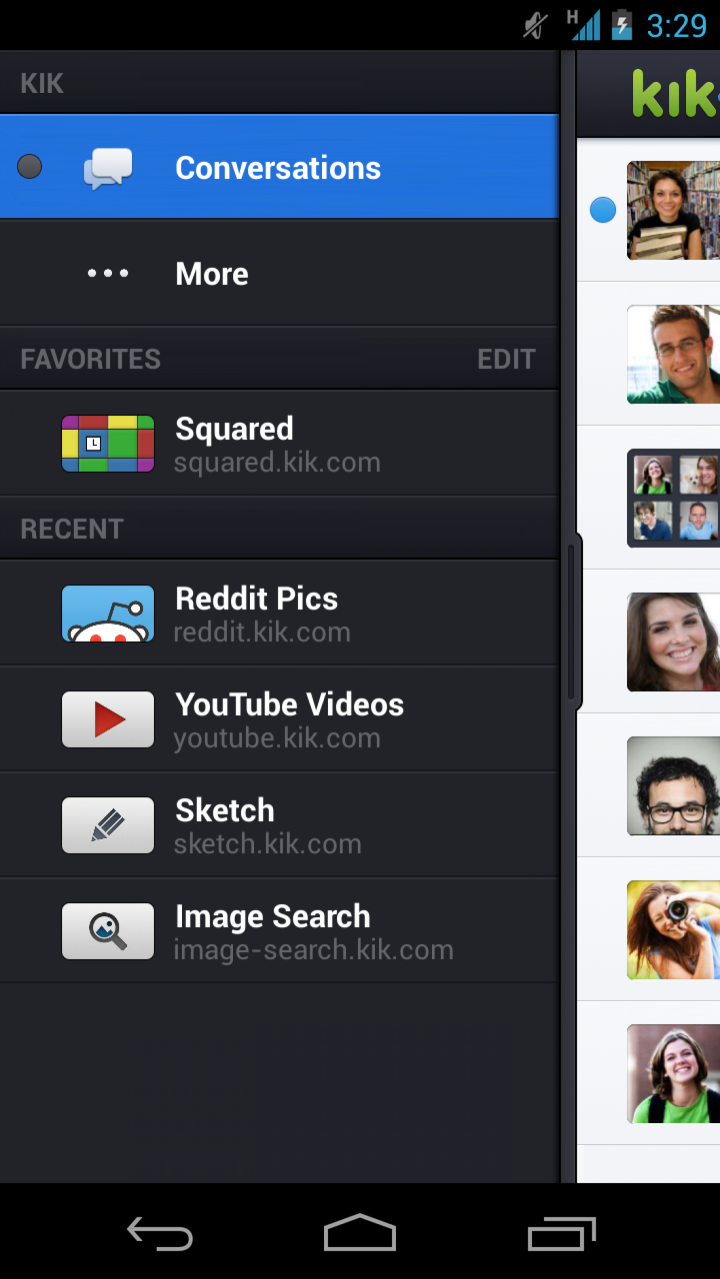BlackBerry BBM For Android, iPhone Release Date Delayed: The Top 5 Alternatives For Cross-Platform Messaging
BlackBerry (NASDAQ:BBRY) failed to release BBM, or BlackBerry Messenger, to Android and iPhone users by Sept. 21, as promised. A BBM executive told consumers not to expect BlackBerry to release a working version this week, and the company has not provided a new release date for the instant messaging app.
An iOS version of BBM briefly appeared on the Apple (NASDAQ:AAPL) App Store, but was pulled due to server problems BlackBerry claims were caused by a leaked version of BBM for Android. Those who downloaded the iPhone app in time will be able to continue to use it, but the unofficial, leaked Android version is no longer functional.
As the cross-platform version of BBM fails to see a release date, many smartphone users are looking for a way to keep in touch across platforms without having to pay for SMS messages or be restricted by 200-character limits, and to easily send instant messages to groups.
Here are the International Business Times’ top nine cross-platform, instant-messaging alternatives to BBM for Android and iPhone:
1) Viber
Viber is used by more than 200 million users and is now available in 28 languages. It is a close, competitive race, but IBTimes has selected Viber as the number one cross-platform messaging app because it is free, and capable of doing mostly everything users are looking for in such an app, on the most platforms of any such app.

Viber can make and receive high-definition quality calls over 3G/4G and WiFi. On certain networks and devices, Viber’s voice calls actually sound better than regular phone calls, and on very slow networks it remains audible. The ability to make a phone call without accruing network minutes is a boon to every consumer who pays for minutes.
Unfortunately, Viber only works as long as both parties in an instant message chat, voice or video call have the app installed. Also, video calls are currently only available from desktop-to-desktop. However (as listed below) Viber also has one of the most comprehensive list of supported apps, including desktop platforms like Windows and Mac.
Viber uses your phonebook to connect with other users, whose IDs are their phone numbers, and recently added the capability of transferring a call from mobile to desktop or vice versa. Viber now confirms when a message is received and read, as opposed to WhatsApp, which only confirms message delivery.
If a message is received on an Android device while the user is in another app, Viber pops up with a quick reply window, similar to a Facebook Messenger "chat head." A quick reply can be typed without exiting the current app, or the notification can be closed.
Viber recently added stickers, emoticons, and Snapchat-like photo doodles to its app, users can set custom wallpapers for each conversation and on Windows Phone 8, Viber can be added as a live tile.
Viber is available on: Android, iPhone (iOS), Windows Phone, BlackBerry, Windows 8, Mac OS X, Symbian, Series 40 (S40), Samsung Bada, and a Linux client is in a (downloadable) beta. Viber is capable of free text messages or IMs, group texts, voice calls, video calls on desktop operating systems, file sharing and location sharing.

2) WhatsApp
WhatsApp is currently the most popular cross-platform messaging app by far, with more than 300 million users (as of July), and roughly 27 billion messages sent daily. Facebook was rumored to be interested in acquiring WhatsApp, although the company’s founders have said they have never discussed selling the company.
WhatsApp’s CEO said the app was “bigger than Twitter” although Twitter currently has more than 550 million registered users with an average of 58 million tweets a day. But social networks have plenty to fear from WhatsApp, since its based around phone numbers and lacks most of the spam and scams found on Twitter, and better maintains user privacy.

WhatsApp costs $0.99 USD for an annual subscription following a one-year free trial, but lacks voice and video calls over WiFi and data plans, keeping it from our number one spot. However, chat groups have begun to rival social networks like Facebook and Twitter as a way of keeping in touch with groups of friends and family, since the groups are easier to organize than Google+ and conversations do not become searchable, public information.
There is no desktop version of WhatsApp available, and no video call feature. Voice calls are made over regular phone networks and therefore incur carrier charges, as opposed to Viber, Google Hangouts and Facebook Messenger. However, WhatsApp recently introduced voice messages and a “last seen” presence indicator. Users cannot customize alerts for contacts or groups, and there are few emoticons, and no stickers or custom wallpapers currently available.
WhatsApp is available for Android, iPhone (iOS), Windows Phone and BlackBerry devices. WhatsApp is capable of free text messaging, group chat, file sharing and location sharing.
3) Skype
Acquired by Microsoft (NASDAQ:MSFT) in 2011, Skype now has about 300 million users. Although it is still primarily used for cheap, international VoIP and video calls, native support on the Xbox One’s Kinect HD could catch on quickly, and make the service as ubiquitous with video chat as FaceTime currently is on Apple devices.
Support on the Surface 2 and Surface 2 Pro are likely going to be less important to Skype, but nice for fans of Windows 8 nonetheless. There certainly are Windows 8 fans out there, for the record.

Skype allows for free user-to-user calling over 3G/4G and WiFi, and supports IMs as well as video chats, although it is best known for making international voice calls, and has done little to improve its perception or increase its market share since it was acquired. Skype purchased GroupMe shortly before being bought by Microsoft, and its app now supports group chats with hundreds of users simultaneously.
Skype is available on Android, iPhone (iOS), Windows Phone, BlackBerry, Windows 8 and Mac OS X. Skype is capable of voice and video calls over data and WiFi, instant messaging and group chat.
4) Facebook Messenger
Facebook Messenger has about 200 million users, and now includes stickers and emoticons, as well as Chat Heads on mobile devices. Facebook Messenger also recently began (although quite sloppily, we might add) duking it out with Android’s built-in Messaging app over the handling of SMS duties.
Facebook (NASDAQ:FB) falls well below competitors on the list, despite that fact that its Messenger app is ubiquitous, and features like “chat heads” are a creative step in the right direction.

Voice calls over Messenger, introduced this April, offer disappointingly poor sound quality. The SMS integration with Facebook conversations is poorly developed and only works on Android devices. Video calls only work over desktop, and voice calls cannot be made to desktop users.
Conversations are synced across different clients in Facebook Messenger, including browser windows and mobile devices, but notifications pop up on mobile while users are chatting in their browsers, which is unnecessary (and a little aggravating). While Android users can use chat heads to take part in a conversation without leaving an app, iPhone users cannot. While there is a Firefox extension for Messenger and a version for Windows, there is currently no desktop version for Mac.
Facebook Messenger is available for Android, iPhone (iOS), Windows Phone, BlackBerry, Windows 8, and can be accessed on Mac OS X through browser windows. Facebook Messenger offers text chat, group chats, voice calls, file sharing, location sharing, and limited video capabilities.
5) Kik Messenger
Kik Messenger is run by Kik Interactive, based in Waterloo, Ontario (practically in BlackBerry’s backyard) and interest is gaining in the app as BBM flounders -- Kik already has more than 80 million users.
Kik is adding new users every day, and has an interesting new app-within-an-app ecosystem, the HTML5-based Cards, which the company says it will be open to outside developers. Kik is limited to text and picture conversations. Kik comes with a free sticker package, and more can be had with an in-app purchase of $1.99.

Kik is free, and allows for messages to be send over data or WiFi plans, with group chats that limit conversations up to 13 people. Kik has a picture mail feature and also confirms when messages are sent, delivered and read, much like BBM. Notification options, such as group messages, can be customized and Kik is free of advertising.
Kik is available for Android, iPhone (iOS), Windows Phone, BlackBerry and Symbian. Kik allows for text messages, group chat, picture messages, “sketch” messages, and YouTube content messages.
Conclusion
The truth is that no cross-platform messaging app is perfect, and when BBM for Android and iPhone is finally revealed, BlackBerry’s messaging app will not be either. Android and iPhone users will not be able to make voice calls over WiFi or video calls like the version of BBM for BB10 devices, and BBM channels will probably launch for the two most popular mobile operating systems well after it is released for BlackBerry smartphones.
In the meantime, if you are waiting for BBM for Android or iPhone, take a look at apps like Viber and WhatsApp, which are already ahead of the curve when it comes to keeping in touch -- and will only cost your data plan to do so.
Five “Honorary” Mentions
BlackBerry Messenger (BBM)
BBM consists of 55 million BlackBerry users, a number that is likely to go way up once the Android and iPhone versions are released. BBM for Android claims 1.1 million unofficial installations in a 24-hour period, without ever appearing in the Google Play Store.
If there is anything positive to say about BlackBerry, it is that demand for BBM on Android and iPhone appears to be high, although the company has not revealed how many iPhone downloads occurred before the app was pulled.
BlackBerry swears that BBM will officially come again to Android and iOS devices, and will allow users to communicate with BB10 phones, however there will probably never be a versions that works on Windows Phone, and the desktop client is still in very early, experimental stages, and has not yet been announced.
BBM was the first instant messaging client to offer real-time sent and read receipts, and will work over data plans and WiFI. However, BBM voice and video are not coming to the Android, iOS versions of BlackBerry Messenger, whenever they are released, and neither will the Twitter-like feeds of the upcoming BBM Channels feature.
LINE
Line surpassed 200 million users less than two years after its launch. The cross-platform messaging app recently added video call support to iPhone, Android, Windows and Mac OS X, available over WiFi or 3G/4G networks.
LINE is free, although users have to pay for premium stickers and emoticons, and it very popular in Asia, and considered to be the messaging app of choice in Japan. LINE offers a social network feature, and offers add-on apps like Camera and Games, as well as a desktop client.
Users can use LINE to make voice calls on iOS, Android, Windows 8 and Mac OS X, although the feature is not available not on Windows Phone or BlackBerry yet. Line offers group chatrooms, the ability to toggle notifications and messages up to 10,000 characters supported in Notes. Group chats are supported by up to 100 users, and LINE offers the ability to share a location and send photo messages.
LINE recently introduced a Snap Movie feature for iPhone, similar to Vine.
Google Hangouts
Google replaced Talk with Hangouts, which allows for group text, video chat, instant messags, voice calls, file sharing and even screen sharing. However, Hangouts is poorly integrated with Google services other than the desktop version of Gmail, and there is no location sharing option.
Also, Google did not integrate Google Voice in the most recent update update (Sept. 26), although the company has promised to do so.
WeChat has more than 400 million users in China, and 100 million international users. It is available for Android, iPhone (iOS), Windows Phone, BlackBerry, Symbian, Nokia S40. WeChat introduced animated stickers are premium with version 5.0, and confirms official accounts similarly to how Twitter verifies companies and celebrities.
Follow Thomas Halleck if you are anxiously anticipating BBM or any other cross-platform messaging service, and let us know which service is best on Twitter at IBTimes Tech/Sci.
© Copyright IBTimes 2024. All rights reserved.





















